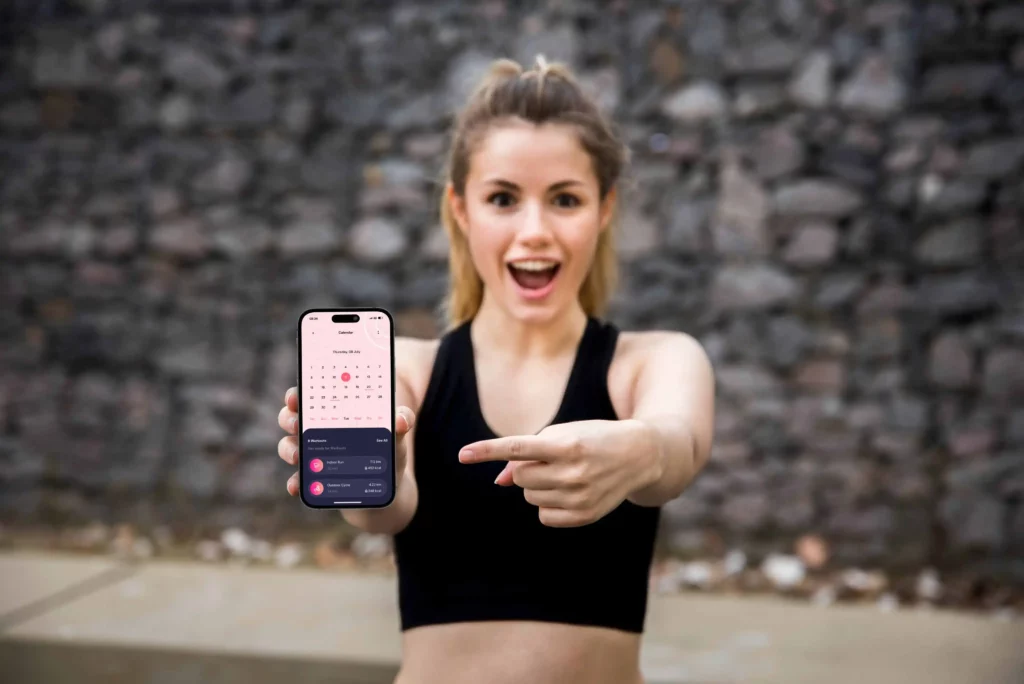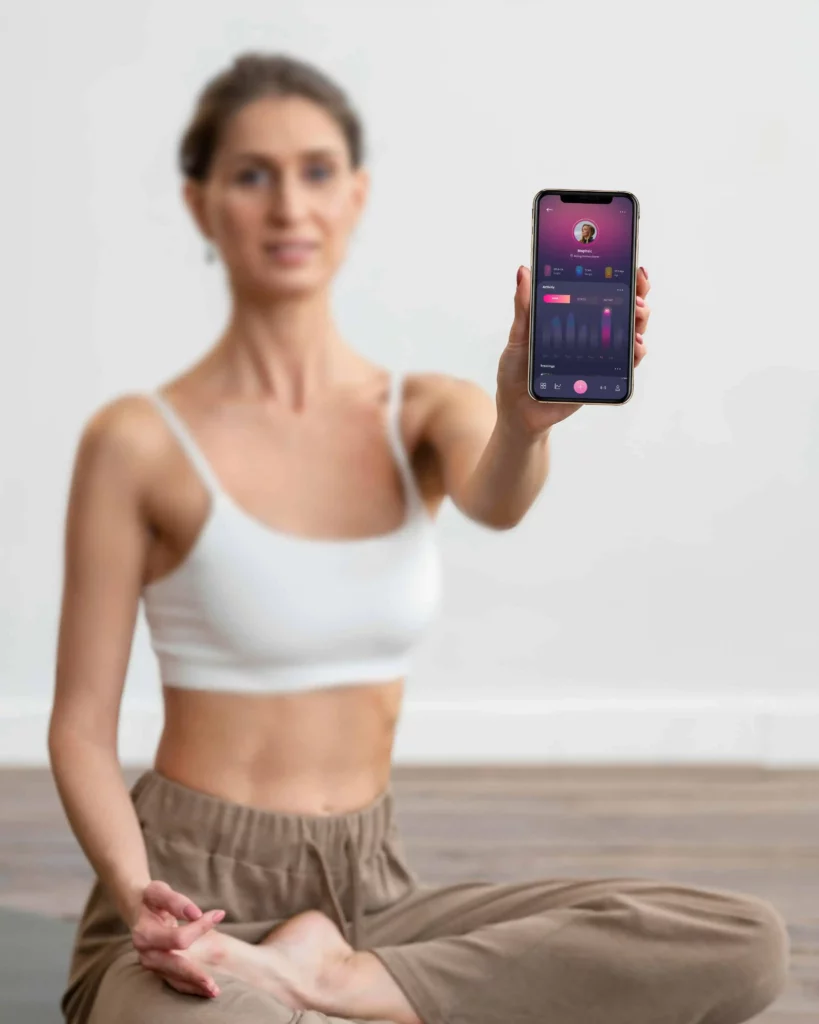Introduction
With fitness technology on the rise, mobile apps have become an essential tool for fitness enthusiasts and casual users alike. People are looking for accessible, convenient, and personalized ways to achieve their fitness goals, and a well-designed fitness app can provide that. Whether it’s virtual training, workout tracking, or personalized nutrition plans, fitness apps offer a world of possibilities.
In this blog post, we’ll explore the steps to developing a fitness app that stands out. From must-have features to industry trends and expert insights, we’ll guide you through what it takes to build a successful fitness app that keeps users engaged and helps them achieve their fitness goals.
Why Build a Fitness App?
The demand for fitness apps has skyrocketed as more people seek ways to stay active and healthy on their own terms. Here’s why building a fitness app is a great idea:
- Growing Market Demand: With more people working remotely or following flexible schedules, the need for convenient, at-home fitness options has increased.
- Enhanced User Engagement: Fitness apps keep users motivated with features like goal tracking, rewards, and social integration.
- Diverse Revenue Streams: Fitness apps offer multiple monetization opportunities, from subscription plans and in-app purchases to ad revenue and partnerships.
- Data-Driven Personalization: Fitness apps can leverage data to provide personalized plans, improving user retention and satisfaction.
Key Trends in Fitness App Development
Fitness apps are continually evolving to meet user needs and adapt to the latest technology. Here are some of the top trends to consider when building a fitness app:
1. AI-Powered Personalization
AI is transforming fitness apps by offering personalized workout recommendations, nutrition plans, and wellness tips based on user data. The more personalized the experience, the more likely users are to stay engaged.
Key Features to Include:
- AI-driven workout recommendations based on user progress and goals
- Customized meal plans based on dietary preferences and fitness targets
- Smart feedback on form, technique, or posture (for apps with video)
2. Wearable Integration
With wearable technology like fitness trackers and smartwatches on the rise, integrating your app with popular devices can offer users a seamless experience. Wearable integration allows users to track their steps, heart rate, calories, and more.
Key Features to Include:
- Sync with devices like Apple Watch, Fitbit, and Garmin
- Real-time data tracking for steps, heart rate, and calories burned
- Activity logging based on wearable data
3. Gamification and Rewards
Gamification keeps users motivated by turning fitness into a fun, rewarding experience. By adding game-like elements such as achievements, points, or challenges, fitness apps can encourage users to stay active and meet their goals.
Key Features to Include:
- Daily, weekly, or monthly challenges with rewards
- Leaderboards where users can compare progress with friends
- Badges, points, or virtual currency for completing workouts
4. Live Streaming and Virtual Classes
The pandemic led to a surge in demand for virtual fitness classes, and this trend shows no signs of slowing down. Offering live or on-demand workout classes allows users to participate in group sessions from anywhere.
Key Features to Include:
- Live streaming for real-time workout classes
- On-demand video library with different workout types and levels
- Scheduling tool for upcoming live sessions or classes
5. Mental Health and Wellness Features
Fitness is no longer just about physical health; users are increasingly looking for mental health and wellness options. Adding features like meditation, mindfulness exercises, and stress tracking can set your app apart from others focused solely on fitness.
Key Features to Include:
- Guided meditation and breathing exercises
- Mental health tracking for mood, stress levels, and sleep quality
- Wellness tips and resources for overall mental well-being
Must-Have Features for a Fitness App

To create a successful fitness app, it’s essential to include features that keep users engaged, motivated, and empowered to reach their fitness goals. Here are the must-have features for your fitness app:
1. User Profiles and Goal Setting
Your app should allow users to create personalized profiles, set fitness goals, and track their progress over time. This personalization encourages engagement and helps users stay on track.
Key Features to Include:
- User profile creation with basic information, fitness level, and goals
- Goal setting for weight loss, muscle gain, endurance, etc.
- Progress tracking with visual representations like charts and graphs
2. Workout Library and Customizable Plans
Offering a variety of workouts for different fitness levels and goals is essential for a fitness app. Users should be able to choose from pre-designed routines or create their own custom plans.
Key Features to Include:
- Workout library categorized by type (strength, cardio, yoga, etc.)
- Filter options by difficulty, duration, and equipment needed
- Customizable workout plans based on user preferences
3. In-App Progress Tracking
Users want to see their progress over time. In-app tracking for completed workouts, calories burned, and milestones achieved is crucial for motivating users and keeping them engaged.
Key Features to Include:
- Activity tracking for workouts completed, calories burned, and steps
- Progress graphs and milestones for visual motivation
- Weekly or monthly summaries of achievements
4. Community and Social Features
Community features foster a sense of belonging and motivation. Allowing users to connect with others, share achievements, and participate in group challenges can enhance engagement.
Key Features to Include:
- Social feed where users can share progress or achievements
- Group challenges and leaderboards for friendly competition
- Integration with social media platforms for easy sharing
5. Push Notifications and Reminders
Push notifications can keep users engaged by reminding them to complete workouts, join challenges, or check their progress. This feature is essential for maintaining regular app usage.
Key Features to Include:
- Reminders for scheduled workouts or upcoming challenges
- Notifications for hitting milestones or achieving goals
- Personalized messages based on user behavior and engagement
6. Subscription and Payment Options
To monetize your app, you’ll need a variety of payment options, from one-time purchases to subscription-based plans. Offering both free and premium content can help attract a wider audience.
Key Features to Include:
- In-app subscription options for premium content or features
- Free trial or freemium model to attract new users
- Integration with secure payment gateways (Apple Pay, Google Pay, etc.)

Pro Tips for Building a Successful Fitness App
To ensure your fitness app is a success, consider these expert tips during development:
1. Start with a Minimum Viable Product (MVP)
Begin by launching an MVP with core features like workout tracking, user profiles, and goal setting. As you gather feedback from users, expand with advanced features like AI-driven personalization, live classes, or wearable integration.
2. Focus on UX/UI Design
A fitness app should be intuitive and easy to navigate. Invest in a clean, attractive design that makes it easy for users to track their progress, browse workouts, and manage their profiles without frustration. Read more about Application development stages in our blogpost.
3. Leverage Data for Personalization
Collect data on user behavior to provide personalized recommendations for workouts, nutrition, and wellness tips. Personalization can improve user satisfaction and retention by making the app feel tailor-made for each individual.
4. Optimize for Mobile and Wearables
Since fitness apps are often used on the go, ensure your app is optimized for mobile devices. If possible, add compatibility with popular wearables, which can enhance the experience for users who track workouts and health metrics through fitness devices.
5. Create Engaging Content
Work with fitness experts to create engaging, high-quality content. A library of video workouts, wellness tips, and expert advice can keep users returning to the app and deepen their commitment to their fitness journey.
Conclusion
A well-designed fitness app can be an invaluable tool for helping users reach their fitness goals while also driving revenue and engagement for your business. By including essential features like personalized workouts, progress tracking, and community interaction, you can create an app that stands out in the crowded fitness market.
